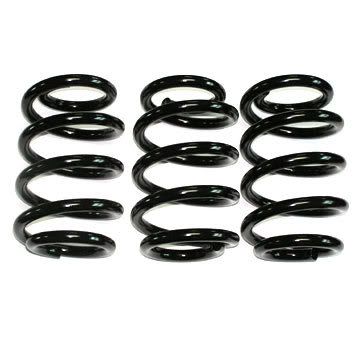 Spring Rate is the amount of weight needed to compress a spring. Which mean how many pounds of weight are required to depress the spring by one inch. Springs are rated in LB/in (in metric system kg/mm).
Spring Rate is the amount of weight needed to compress a spring. Which mean how many pounds of weight are required to depress the spring by one inch. Springs are rated in LB/in (in metric system kg/mm).
For an example, we do have 2 springs which the first spring rated at 400g/mm while the second spring rated at 500g/mm. So it means that the first spring will compress 1mm if loaded with 400 grams while the second spring will compress only when loaded 500grams. Therefore we can conclude that the second spring is harder than the first spring. And now we know that springs with low spring rate are softer than those springs with high spring rate.
If there are 2 different values listed, it means that the spring starts at one rate, and ends at another rate under full compression.
For example: a 10lb to 25lb progressive spring will need 10lb to compress it the first inch, then 13lb the next inch, and so on, until the end of the travel; it will take 25lb to compress it the last inch. The benefit of this is that the spring can be soft enough at the start of the travel to offer a soft ride yet be stiff enough at the end of the travel to performance well during hard braking and turning. There are 3 things that affect the spring rate:
There are 3 things that affect the spring rate:
1. Number of Active Coils (length / height of the coil spring): Determination of the active coil number varies according to spring design. Total coil number -2 for springs with both ends closed. Count the total coils -1 for springs with one end closed and one end open.
As the number of active coil decrease, the spring rate increases.
2. Diameter of the wire: Diameter of the wire itself affects the spring rate because when diameter of the wire increases it gets stronger, meaning a wire which is harder to compress. So, if we know that a wire becomes harder when its diameter increases, we can say that:When wire diameter increases, spring rate increases.
3. Diameter of the spring: That is in fact 'the mean diameter of the spring', achieved by subtracting the diameter of the wire from diameter of the spring:
The overall outside diameter of the spring (mm) - diameter of the wire (mm)
When diameter of the suspension spring increases, the spring rate decreases.
Normal Springs has a fixed spring rate.
Step Linear Springs are springs which have 2 different spring rates.
Progressive Springs have a variable spring rate.







